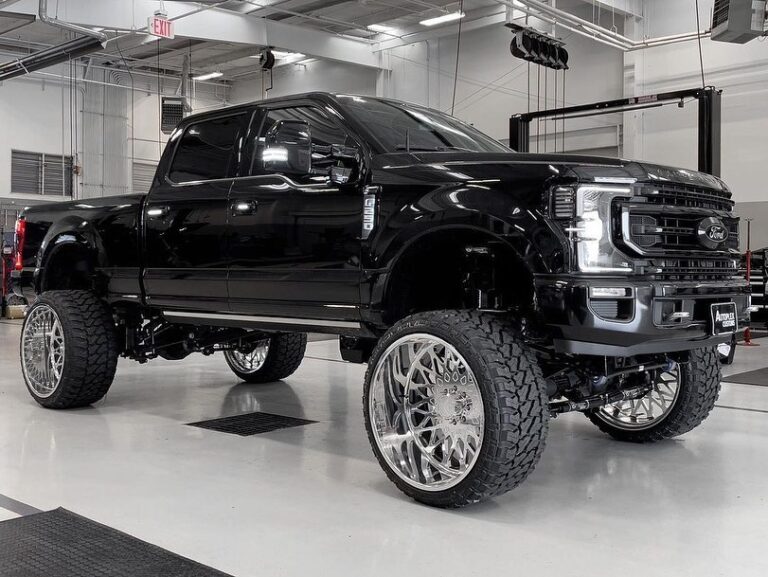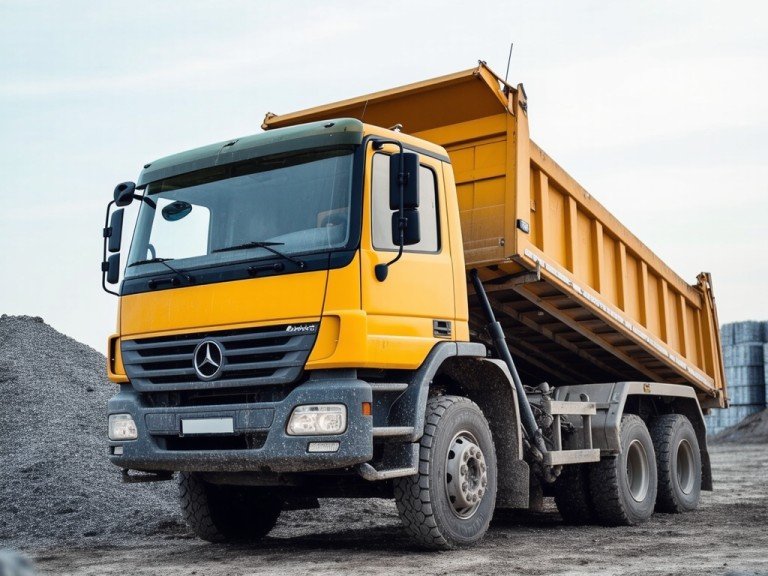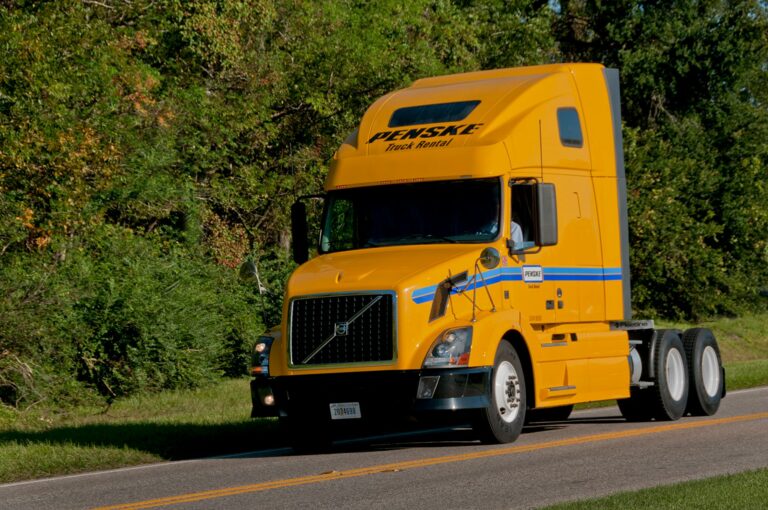Leer Truck Cap Weight Chart: Navigating Payload, Performance, and Practicality
Leer Truck Cap Weight Chart: Navigating Payload, Performance, and Practicality cars.truckstrend.com
For truck owners, the addition of a truck cap is often a game-changer, transforming an open bed into a secure, weather-protected, and versatile storage or living space. Among the most reputable manufacturers, Leer stands out for its quality and diverse range of caps. However, beyond aesthetics and features, a critical, often overlooked aspect is the Leer Truck Cap Weight Chart. Understanding the weight of your Leer truck cap is not merely a technical detail; it’s fundamental to your truck’s safety, performance, fuel efficiency, and overall longevity. This comprehensive guide will delve into the intricacies of Leer truck cap weights, empowering you with the knowledge to make informed decisions and optimize your truck’s capabilities.
The Unseen Burden: Why Truck Cap Weight Matters
Leer Truck Cap Weight Chart: Navigating Payload, Performance, and Practicality
At first glance, a truck cap might seem like a relatively light addition, a mere accessory. However, its weight, combined with the weight of any cargo you carry, directly impacts your truck’s Gross Vehicle Weight Rating (GVWR) and Gross Axle Weight Rating (GAWR). These ratings are the maximum permissible weights your truck can safely carry, including its own curb weight, passengers, and cargo. Exceeding these limits can lead to a cascade of negative consequences:
- Safety Hazards: Compromised braking distance, reduced steering responsiveness, increased risk of rollovers, and instability, especially at highway speeds or during emergency maneuvers.
- Accelerated Wear and Tear: Overloaded suspensions, tires, brakes, and even the truck’s frame will wear out prematurely, leading to costly repairs and reduced lifespan for critical components.
- Reduced Fuel Efficiency: More weight means your engine has to work harder, directly translating to lower miles per gallon (MPG) and higher fuel costs.
- Warranty Issues: Exceeding manufacturer specifications can potentially void parts of your truck’s warranty, leaving you responsible for repairs.
- Legal Ramifications: In some jurisdictions, operating an overloaded vehicle can result in fines and penalties.

Therefore, knowing your Leer truck cap’s weight is the first step in ensuring you stay within your truck’s operational limits, maintaining safety, performance, and peace of mind.
Factors Influencing Leer Truck Cap Weight
Unlike a one-size-fits-all product, Leer truck caps come in a vast array of models, materials, and configurations, each contributing to its unique weight profile. Understanding these contributing factors is crucial for accurately estimating the weight of your specific cap.

Material Type:
- Fiberglass: The most common material for Leer caps (e.g., 100R, 100XR, 180). Fiberglass offers an excellent balance of strength, durability, and relatively low weight. It allows for complex, aerodynamic designs and smooth finishes. Most recreational caps are made of fiberglass.
- Aluminum: Primarily used for Leer’s commercial (DCC – Durable Commercial Cap) and utilitarian models. Aluminum caps are generally lighter than equivalent fiberglass caps, making them ideal for work trucks where maximizing payload is paramount. They are also highly durable and resistant to corrosion.
- Carbon Fiber: While not a standard offering for all models, some high-end or custom caps might incorporate carbon fiber for ultimate weight savings. This material is incredibly strong and lightweight but comes at a significantly higher cost.

-
Cap Model and Design:
- Cab-High (e.g., 100R, 100XR, 100XL, 100XQ): These caps are designed to match the height of the truck’s cab, offering a sleek, integrated look. They are generally the lightest due to their lower profile and reduced material usage.
- Mid-Rise (e.g., 180): Slightly taller than cab-high models, offering more interior volume and headroom without significantly impacting aerodynamics. They will naturally weigh a bit more than cab-high versions.
- High-Rise (e.g., 122): These caps extend significantly above the cab, providing maximum interior space, ideal for camping, hauling tall items, or commercial applications. The increased volume translates directly to more material and thus higher weight.
- Commercial/Utility (e.g., DCC): These caps are built for heavy-duty use, often with reinforced construction, integrated toolboxes, and ladder racks. Their robust design and often aluminum construction mean they are typically the heaviest Leer caps.
-
Truck Bed Size:
- It’s intuitive: a cap for an 8-foot long bed will weigh more than a cap for a 5.5-foot short bed, simply due to the increased dimensions and material required.
- Similarly, a cap for a full-size truck (e.g., Ford F-150, Ram 1500) will be wider and potentially heavier than one for a mid-size truck (e.g., Toyota Tacoma, Chevy Colorado).
-
Optional Features and Accessories:
- This is where the "base weight" can significantly increase. Common add-ons include:
- Roof Racks: Essential for carrying bikes, kayaks, or additional gear, but they add substantial weight (20-50+ lbs depending on type and capacity).
- Interior Headliners: Adds insulation and a finished look (5-20 lbs).
- Sliding or Vented Windows: Heavier than fixed windows due to mechanisms.
- Toolboxes or Storage Bins: Particularly in commercial models, these can add significant weight, even empty.
- Power Outlets and Lighting: Minor weight additions, but they add up.
- Heavy-duty Locks or Security Features: Can increase overall mass.
- Fold-down or Removable Front Windows: More complex mechanisms add weight.
- This is where the "base weight" can significantly increase. Common add-ons include:
How to Find Your Leer Truck Cap’s Specific Weight
While a single "Leer Truck Cap Weight Chart" encompassing every model, size, and configuration is not something Leer typically publishes in a consolidated format due to the sheer number of variables, you can find the weight for your specific cap or the one you are considering:
- Leer’s Official Website/Product Pages: When browsing specific Leer models (e.g., 100R, 180, DCC), the product specifications section often lists the "approximate base weight" or a weight range for common truck sizes. This is your most reliable source for a new cap.
- Authorized Leer Dealers: Your local Leer dealer is an excellent resource. They have access to detailed product specifications, including weights for various configurations, and can help you calculate the estimated total weight based on your chosen options.
- Product Brochures/Manuals: If you already own a Leer cap, check the original documentation that came with it. Weight specifications are sometimes included there.
- Actual Weighing (Less Common): For existing caps, if you need an extremely precise weight (e.g., for commercial purposes or meticulous vehicle tuning), you could potentially have the cap weighed independently after removal. This is generally impractical for most users.
Important Note: Always differentiate between "base weight" (the cap without any options) and the "equipped weight" (base weight plus all chosen accessories). The latter is the figure you should use for your payload calculations.
Conceptual Leer Truck Cap Weight Chart (Estimated Ranges)
As discussed, a precise universal chart is elusive due to customization. However, the table below provides estimated base weight ranges for common Leer truck cap models and materials. These are illustrative estimates only and actual weights will vary significantly based on your truck’s bed size (short vs. long, mid-size vs. full-size) and specific options. Always consult Leer’s official specifications or your dealer for exact figures.
| Leer Truck Cap Model (Type) | Material Type | Estimated Base Weight Range (lbs) | Typical Truck Bed Size | Notes on Design/Features |
|---|---|---|---|---|
| 100R (Cab-High) | Fiberglass | 150 – 180 | Short Bed (5.5-6.5 ft) | Entry-level, smooth lines, fixed side windows. Lighter due to minimal features and cab-height design. |
| 100R (Cab-High) | Fiberglass | 170 – 210 | Long Bed (8 ft) | Same design as above, but increased length for longer beds. |
| 100XR / 100XL (Cab-High) | Fiberglass | 160 – 200 | Short Bed (5.5-6.5 ft) | Premium cab-high, often with side access windows (XR) or frameless windows (XL). Slightly heavier due to more features. |
| 100XQ (Cab-High Luxury) | Fiberglass | 170 – 220 | Short/Long Bed | Sleekest design, often with frameless windows, hidden hinges. Premium features add slight weight. |
| 180 (Mid-Rise) | Fiberglass | 180 – 250 | Short/Long Bed | Offers more headroom than cab-high, making it slightly heavier. Popular for camping and light utility. |
| 122 (High-Rise) | Fiberglass | 200 – 300+ | Short/Long Bed | Maximum interior volume for tall cargo, very popular for work or camping. Heaviest of the fiberglass recreational caps. |
| DCC (Commercial) | Aluminum | 250 – 400+ | Short/Long Bed | Built for heavy-duty use. Weight varies greatly with shelving, toolboxes, and ladder racks. Often the heaviest category. |
| DCC (Commercial) | Fiberglass | 280 – 450+ | Short/Long Bed | Commercial-grade fiberglass caps, also highly customizable and can be quite heavy with accessories. |
| Common Add-ons (e.g.) | N/A | Additional 10 – 50+ | N/A | Roof racks, interior headliners, heavy-duty rear doors, specific window types (e.g., insulated), toolboxes (empty weight). |
Disclaimer: These weights are highly generalized and should be used for conceptual understanding only. Your actual Leer truck cap weight will depend on the specific model, the exact dimensions for your truck’s make/model/year, and the unique combination of features and accessories you choose.
Practical Advice and Actionable Insights
Understanding your Leer truck cap’s weight is just the beginning. Here’s how to apply that knowledge for optimal performance and safety:
-
Before Purchase:
- Know Your Truck’s Ratings: Locate your truck’s GVWR and GAWR (usually on a sticker in the driver’s side door jamb or in the owner’s manual).
- Factor in Everything: Remember to include the weight of the cap, passengers, and all cargo when calculating your total load.
- Consider Future Needs: If you anticipate frequently hauling heavy loads or using a roof rack, factor that into your cap choice. A lighter base cap might allow for more cargo flexibility.
-
During Installation:
- Professional Installation: Always opt for professional installation by an authorized Leer dealer. They ensure proper fit, secure mounting, and even weight distribution, which is crucial for handling.
- Check Balance: While the cap itself is largely balanced, ensuring your truck is level after installation is a good indicator of proper load distribution.
-
After Installation and During Use:
- Re-evaluate Payload: Subtract the cap’s weight from your truck’s available payload capacity. This new figure is your safe cargo limit.
- Adjust Tire Pressure: Refer to your truck’s owner’s manual or the tire placard for recommended tire pressures when carrying a heavy load. Proper inflation is vital for safety, tire longevity, and fuel efficiency.
- Consider Suspension Upgrades: If your truck sags noticeably after the cap installation, or if you frequently carry heavy loads, consider suspension enhancements. Options include:
- Airbags: Adjustable air springs that provide additional support and level the truck, allowing you to fine-tune ride height and stiffness.
- Helper Springs: Add-on leaf springs that provide extra support for heavy loads.
- Heavy-Duty Shocks/Springs: Replacing factory components with aftermarket heavy-duty versions can improve handling and load-carrying capacity.
- Load Distribution: When loading cargo into the cap, distribute weight evenly. Heavy items should be placed low and centered, not high or to one side, to maintain stability.
- Driving Habits: A heavier truck with a cap will have a higher center of gravity and longer braking distances. Drive more conservatively, allow extra stopping room, and take turns slower.
- Regular Checks: Periodically inspect the cap’s mounting clamps and bolts to ensure they remain secure.
Challenges and Solutions Related to Cap Weight
- Challenge: Exceeding Payload Capacity.
- Solution: Choose a lighter Leer cap model or material (e.g., aluminum DCC over fiberglass 122 if utility is key). Lighten your cargo load. Consider suspension upgrades to handle the weight more effectively, though this does not increase your truck’s GVWR.
- Challenge: Reduced Fuel Economy.
- Solution: A heavier truck will naturally use more fuel. Ensure tires are properly inflated, maintain good vehicle maintenance, and adopt conservative driving habits (avoid rapid acceleration/braking). Consider aerodynamic caps (like the 100XQ) if MPG is a top priority.
- Challenge: Poor Handling and Ride Quality.
- Solution: Proper tire pressure is critical. If still an issue, invest in suspension upgrades (airbags, heavy-duty shocks/springs) to restore ride height, stability, and handling.
- Challenge: Premature Tire Wear.
- Solution: Maintain correct tire pressure, especially when loaded. Regularly rotate and balance tires. Consider upgrading to "E" rated (heavy-duty) tires if your truck will frequently carry maximum loads.
Frequently Asked Questions (FAQ)
Q1: How much does a typical Leer truck cap weigh?
A1: Leer truck cap weights vary significantly, but most fiberglass recreational caps for a full-size short bed truck fall in the range of 150-250 lbs. Commercial aluminum caps can range from 250-400+ lbs, depending on size and accessories.
Q2: Will adding a truck cap significantly affect my truck’s fuel economy?
A2: Yes, adding a truck cap, regardless of brand, will generally reduce your truck’s fuel economy. The added weight means the engine works harder, and the cap can alter the truck’s aerodynamics. However, a well-designed, aerodynamic cap can sometimes be more fuel-efficient than an open bed, especially at highway speeds, by reducing drag.
Q3: Do I need to upgrade my truck’s suspension after installing a Leer cap?
A3: It depends on your truck’s existing suspension, the cap’s weight, and how much additional cargo you plan to carry. If your truck sags noticeably, handles poorly, or you frequently approach your payload limit, suspension upgrades like airbags or heavy-duty shocks/springs are highly recommended for safety and performance.
Q4: How do I find the exact weight of my specific Leer cap?
A4: The most accurate way is to check the specifications provided by Leer on their official website for your specific model and truck bed size, or to ask an authorized Leer dealer. The weight will be listed as an "approximate base weight" or a range, with additional weight for optional features.
Q5: Is an aluminum Leer cap always lighter than a fiberglass one?
A5: For comparable size and feature sets, aluminum caps (like the Leer DCC) are generally lighter than fiberglass caps designed for similar utility. However, a heavily accessorized aluminum commercial cap can still outweigh a basic, cab-high fiberglass cap.
Q6: What is GVWR, and why is it important for truck caps?
A6: GVWR stands for Gross Vehicle Weight Rating. It’s the maximum safe operating weight of your truck, including the vehicle itself, passengers, fuel, and all cargo. It’s crucial because the combined weight of your truck, Leer cap, and any cargo must never exceed the GVWR to ensure safe handling, braking, and to prevent damage to your vehicle.
Conclusion
The Leer Truck Cap Weight Chart, while not a single published document, represents a critical understanding of how your chosen cap impacts your truck’s capabilities. From enhancing safety and preserving vehicle components to optimizing fuel economy and maximizing utility, being informed about your cap’s weight is paramount. By understanding the factors that influence cap weight, utilizing available resources to find specific model weights, and applying practical advice for managing the added load, you can ensure that your Leer truck cap truly enhances your vehicle, providing years of safe, efficient, and enjoyable service. Invest the time to understand the numbers, and your truck—and your wallet—will thank you.






